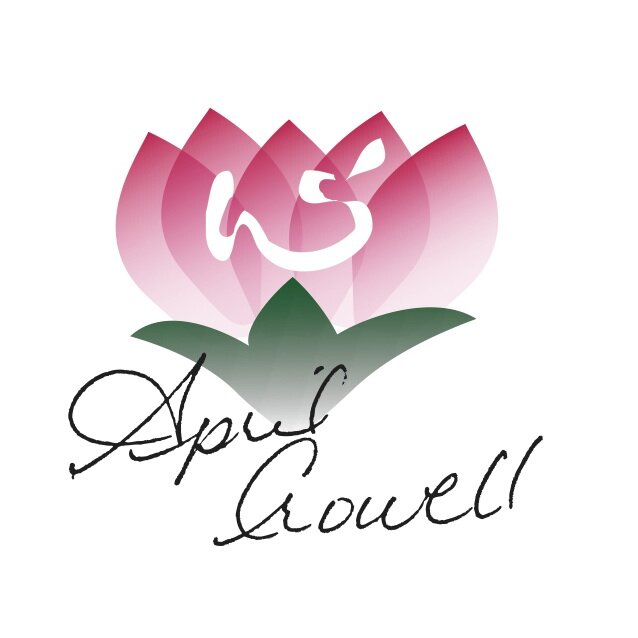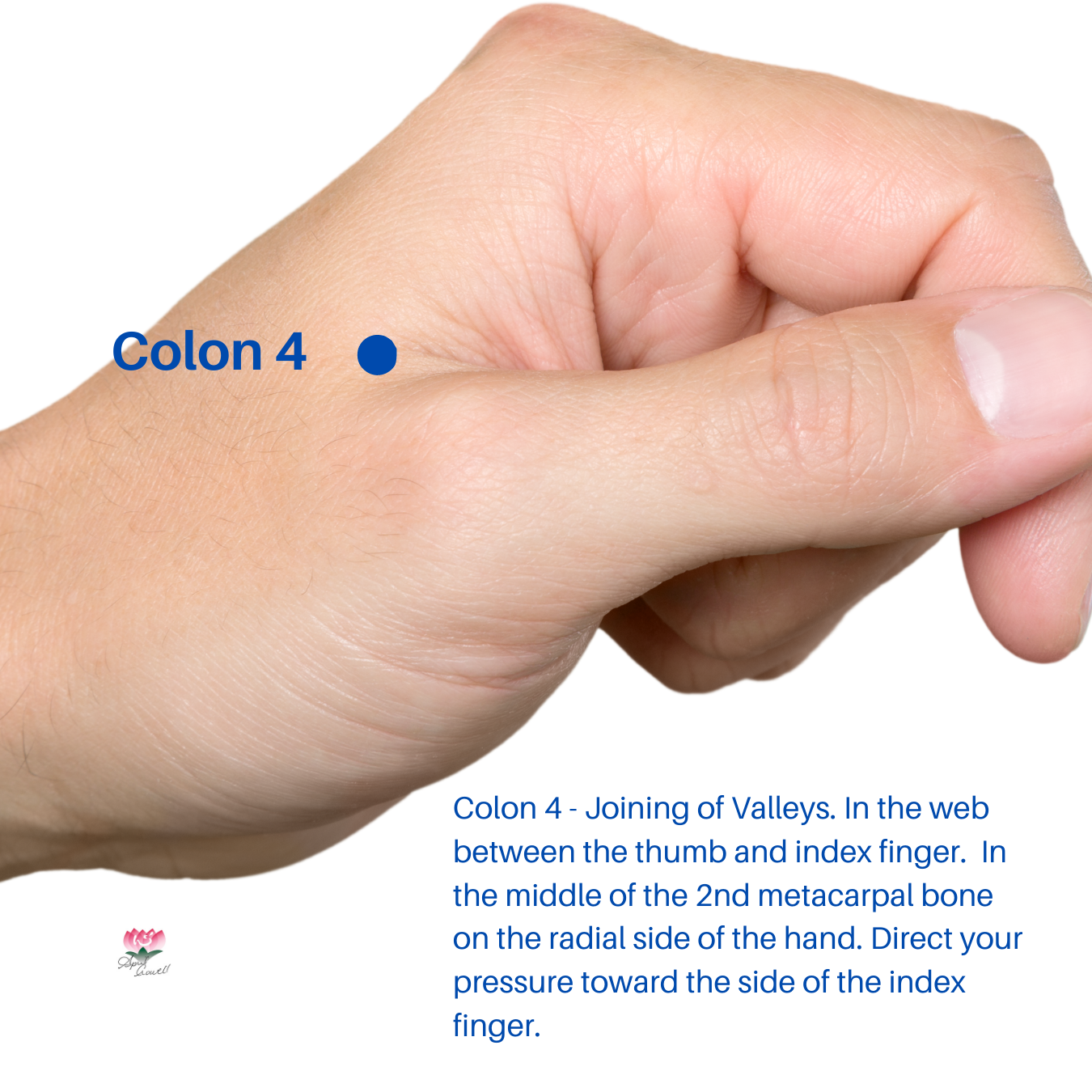An Intro To Acupoints
A client recently asked me what acupuncture/acupressure -- or acupoints for this post -- actually are. I forget, it is not common knowledge. They wanted a basic understanding of why one point felt dull and another more lively, or why and how I selected points for treatment.
In my Amma therapy program I teach all the organ channel points and extra points. In treatment, however, I don’t speak much about which points I am using and why unless a client asks or I give them points to work on their own. Here you go — a very brief intro.
☯
What are acupoints?
Acupoints are specific locations along the organ channels of the body where the Qi of the organs rises to the surface. Practitioners use these points for assessment and treatment.
I am sometimes asked if Amma is the same as trigger point therapy. No, definitely not. Most trigger point therapy is relying on reflexive use of the points. An Amma practitioner's intention is based on using the principles of Chinese medicine, an understanding of the organ and channel systems and its diagnostic tools and application of treatment principles.
How many points are there?
There are 361 points located on the 14 channels that correspond to the 12 organs and points for the Conception and Governing Vessels.
That’s a few points to memorize, learn how to locate and how to use in application. Here’s the breakdown of points by channel.
Lung (9), Colon (20), Stomach (45), Spleen (21), Heart (9), Small Intestines (19), Bladder (67), Kidney (27), Pericardium (9), San Jiao (23), Gallbladder (44), Liver (14), Governing Vessel (27), Conception Vessel (24).
There are a few extra points not located on the channels, such as Yin Tang, and points in various other traditions but we will save them for a later date.
Each point has a —
Name — The original Chinese names are poetic, and steeped in meaning. The English translations try to come as close as possible, and then there is the name for the point just based on the organ channel it is on and its number.
Location — Precise location, and angle for access are necessary to most effectively use each point. Where the acupuncturist inserts needles, Amma therapist and other bodyworkers will access these points using their fingers, and adjusting angle and pressure.
Categorization — There are numerous categories or groups of points by functionality and action. Here are a few with some very simple descriptions. Seriously, my lecture on just the intro to points is a weekend workshop.
Yuan (Source) points — Each of the 12 organ channels has a source point. These points store the corresponding organ’s source Qi. They help balance patterns of excess and deficiency.
Mu (Alarm) points — Located on the abdomen and chest, the Qi of the organ converges here. They are used as a diagnostic reflex points.
Luo (Connecting) points— The bridge the related Yin(internal) and Yang (external) channels of the corresponding phases of the five elements. There are 15 Luo points, including a point for each of the twelve Primary Channels, one each for the Ren Mai and the Dai Mai and an extra one on the Tai Yin Leg Spleen channel. Produce a balanced state between the yin and yang pairs and the organs… primarily treating disharmonies between the two.
Yu (Associated ) points — These twelve points are located on the medial line of the Tai Yang Leg Bladder Channel on the back of the body. These points are where Qi from its associated organ gathers. They treat the internal organs, tonify the Yang aspect and treat the corresponding sensory organs and orifices. Good for chronic problems.
Xi (Hsi) (Accumulation or Cleft) points — These points are found in deep hollows or crevices where bone and flesh cross. They hold the channel’s Qi and Xue and can be used as diagnostic indicators of channel or Zang/Fu excess. Useful for treating acute, painful or stubborn conditions. Xi points are often combined with Hui points for greater effect.
Wu Shu Xue (5 Transporting) points —Located distal to the elbows and the knees. Their name describes how the Qi flows like water into the channel from the Jing (well) point through, Spring, Stream, River, and then to the Sea point.
But wait. There are more categories including: Window of the Sky points, Ghost points, and, Tina Sohn Points, Accumulation points, The 8 Influential points, and a few others.
Functions — These are the actions of the point. Does it tonify, drain dampness, eliminate wind, warm cold, clear heat, or strengthen the organ Qi? Let’s look at Colon 4 - Its functions include clearing obstructions anywhere in the body.
Indications — What pattern does the point treat? Back to Colon 4 which is indicated for use with common colds, headaches, and constipation.
Contraindications—Certain points are avoided in certain states of health. Colon 4 is contraindicated during pregnancy because it has a strongly moves obstructions.
Okay! Now that you have an idea of what points are and how we use them. Let me give you a couple favorites. Again - these are quick overviews of the functions of these points.
Liver 14 - Qi Men, Gate of Hope
Exit and Mu point. Meeting point of Spleen and Yin Linking vessel. Located on the mammilary line 2 ribs below the nipple in the 6th intercostal space.
Functions — Regulates the Liver and Gallbladder, expands and relaxes the chest, transforms damp heat. Moves stasis. Indications — Acid reflux, hepatitis, pancreatitis, acid regurgitation with no desire to eat, hypochondriac pain, distention.
Functions — Inspires hope, encourages vision and planning. Indications — Resignation, loss of hope, lack of clear vision and goals.
Lung 1 - Zhong Fu, Central Palace.
Alarm point for the Lungs, intersecting point for Spleen and Lung. Located 6 tsun lateral to the Conception vessel and 1 tsun inferior to the intraclavicular fossa.
Functions — Regulates and tonifies the Lungs Qi and Yin. Tonifies Ancestral Qi. Indications — Lung abscess, asthma, bronchitis, wheezing, cough, Lung Qi deficiency. Allows for inspiration and helps relieve grief.
Functions — Disperses Lung Qi and clears heat. Indications — Obstruction in the throat (plum pit syndrome), wasting and thirsting syndrome, dry cough, bronchitis.
Use them in combination!
Lung 1 and Liver 14 are two points that I use in most therapy sessions. In combination they treat entry and exit block. The Liver Qi, which should leave the channel at Liver 14 often has a hard time making the leap up to Lung 1. The result is frustration, anger, digestive stagnation, feeling stuck and stagnate in life - lacking inspiration and aspiration, or having a problem acting on them. The block is very easy to read in the pulses. If I’ve treated you, you have felt these points.
Heart 8 - Shao Fu - Lesser Palace
This is the Spring and Fire point on the Heart channel. As an Amma practitioner, I use this point in most treatments (we work the hands). It's located where your pinky touches the palm crease when you make a fist - between the 4th & 5th digit. To palpate locate the point and pull down towards the pinky. Take a few deep breaths and massage the area for 30 seconds or more. Here are a few functions and indications.
Regulates the Heart Qi and transforms Heart phlegm - Use for arrhythmia and palpitations.
Clears heat and damp heat especially in the Small Intestines (Heart's Yang partner). Explosive diarrhea, pain and heat in the genitalia, and urinary incontinence.
Calms the Shen — Shock, anxiety, grief and fright. Dream disturbed sleep.
Quells the urgency of unfulfilled or repressed heart's desires or helps reignite Heart fire if lost.
Happy point hunting.
April








